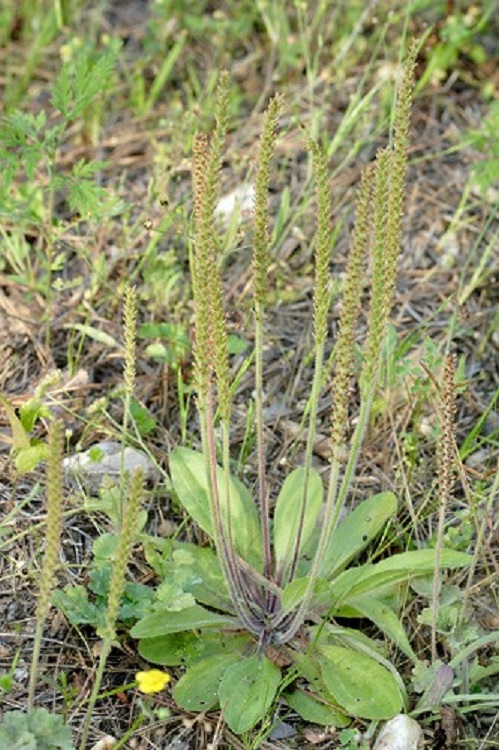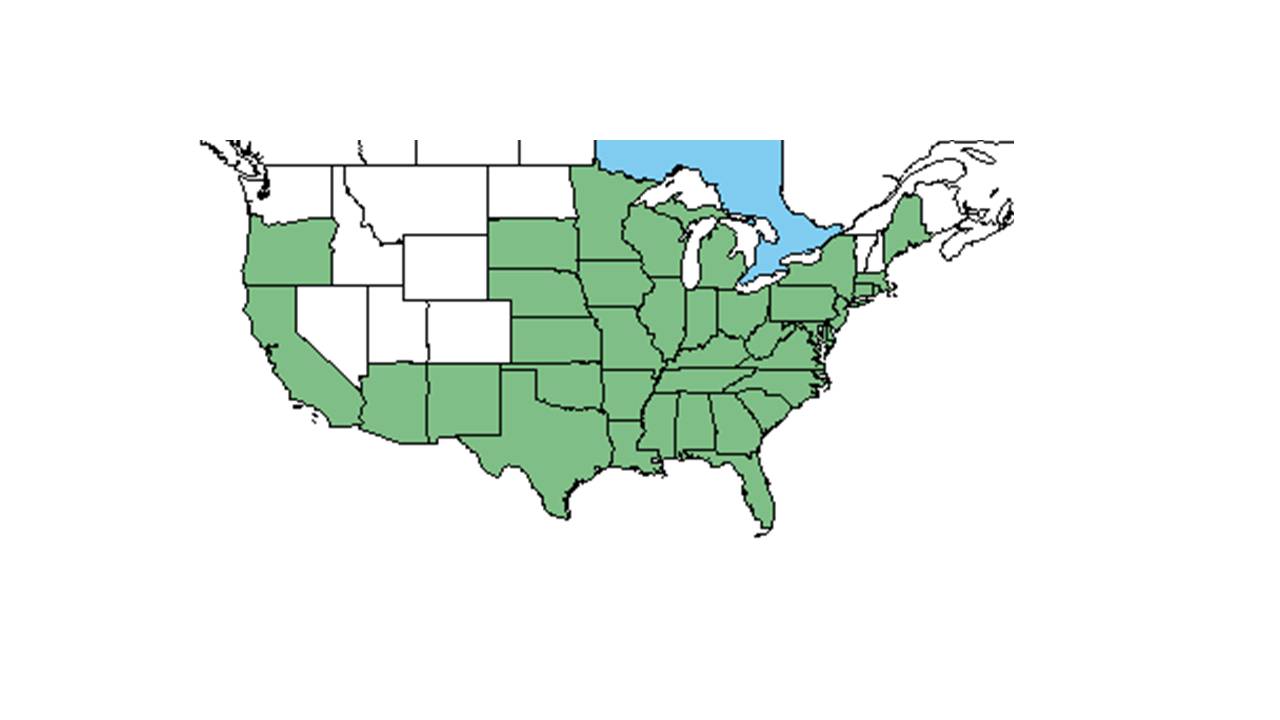Plantago virginica
| Plantago virginica | |
|---|---|

| |
| Photo by John R. Gwaltney, Southeastern Flora.com | |
| Scientific classification | |
| Kingdom: | Plantae |
| Division: | Magnoliophyta - Flowering plants |
| Class: | Magnoliopsida – Dicotyledons |
| Order: | Plantaginales |
| Family: | Plantaginaceae |
| Genus: | Plantago |
| Species: | P. virginica |
| Binomial name | |
| Plantago virginica L. | |

| |
| Natural range of Plantago virginica from USDA NRCS Plants Database. | |
Common names: Virginia plantain, Hoary plantain
Contents
Taxonomic notes
Synonyms: none Varieties: none
Description
"Perennial or annual acaulescent or caulescent herbs. Leaves all basal, or opposite on freely branched stems. Spike bracteate. Calyx actinomorphic, sepals 4, united only at the base; corolla actinomorphic, united ½ or more its length, lobes 4, erect, spreading or reflexed, papery, persistent in fruit. Stamens 4, barely to long exserted; stigma 2-cleft, ovary superior. Capsule circumscissile, 2-locular, 2 to many seeded."[1]
"Acaulescent winter annual with a tap root, often dioecious. Leaves pubescent, oblanceolate to elliptic, the longest ones 2-15 cm long, 0.5-4 cm wide acute to obtuse, irregularly dentate to nearly entire, base attenuate; petioles usually purple at the base, obscured by decurrent blade tissue. Scape hollow, terete, 4-18 cm long. Spike 1-15 cm long, densely flowered and fruited. Bracts and sepals obtuse, calyx lobes 2-2.3 mm long, about equaling to 2X as long as the bracts, margins hyaline; corolla lobes 1.5-2.9 mm long, about equal to tube. Stamens and stigma well exserted. Capsule 2-seeded, 2-3 mm long, circumscissile near the middle. Seeds light brown, nearly smooth, lustrous, grooved on the back, the hilum inconspicuous, ellipsoid, 1.5-1.8 mm long."[1]
Distribution
Ecology
Habitat
A natural community of P. virginica is a frequently burned mature longleaf pine-wiregrass community.[2] In human disturbed areas it has been documented to grow in a mowed grassy roadside, old biocontrol plots, and a lawn near a T.V. tower.[2] It has been observed growing with Pinus palustris and Aristida.[2] It is known to grow in loamy soil and sand of disturbed roadsides.[2]
Phenology
P. virginica has been recorded flowering from January to May and in December with peak inflorescence in April.[2][3]
Seed bank and germination
When exposed to natural seasonal changes, buried seeds of P. virginica exhibit an annual conditional dormancy/non-dormancy cycle.[4] Dormancy is broken in the summer, with the germination season extending from September to November.[4] Peak germination for P. virginica occurs in October.[4]
Conservation and management
Cultivation and restoration
Photo Gallery
References and notes
- ↑ 1.0 1.1 Radford, Albert E., Harry E. Ahles, and C. Ritchie Bell. Manual of the Vascular Flora of the Carolinas. 1964, 1968. The University of North Carolina Press. 974-977. Print.
- ↑ 2.0 2.1 2.2 2.3 2.4 Florida State University Robert K. Godfrey Herbarium database. URL: http://herbarium.bio.fsu.edu. Last accessed: July 2015. Collectors: Robert K. Godfrey, Andre F. Clewell, R.A. Norris, R.F. Doren, R. Komarek, Loran C. Anderson. States and Counties: Florida: Gadsden, Holmes, Leon, Liberty, Wakulla, Washington. Georgia: Grady, Thomas. Compiled by Tall Timbers Research Station and Land Conservancy.
- ↑ Nelson, G. PanFlora: Plant data for the eastern United States with emphasis on the Southeastern Coastal Plains, Florida, and the Florida Panhandle. www.gilnelson.com/PanFlora/ Accessed: 12 DEC 2016
- ↑ 4.0 4.1 4.2 Baskin, C. C., J. M. Baskin, et al. (2003). "Seasonal changes in the germination responses of buried seeds of three native eastern North American winter annuals." Plant Species Biology 18: 59-66.